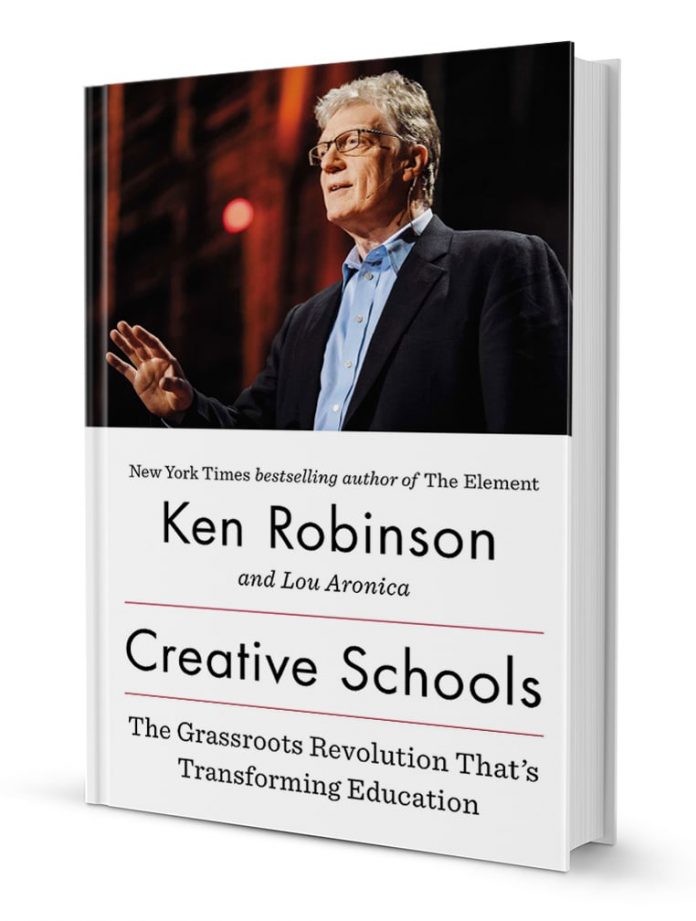Sravanthi Challapalli
Gardening metaphors are common among educators and education thinkers in the discussion of teaching and child-related theories and principles. Interestingly, KenRobinson, in Creative Schools, written with Lou Aronica, compares and draws parallels between industrial farming and organic farming in the discussion of standardised/mass education and learning that is imparted in more democratic ways.
First published in 2015, Creative Schools traces the history and growth of today’s formal ‘standards’ education system – with its focus on curriculum, teaching and assessment. The emphasis on high performance and the attendant competition sprang from the assumption that it would raise standards. Students are in a race, teachers are judged on their students’ scores and the thus ‘successful’ schools, in a global context at least, would get more funding, staff promotions and remain open or retain leadership.
Mass systems of education came into being with the Industrial Revolution of the 19th century, which took root and gathered pace in Europe a hundred years prior. The emphasis changed from rural and artisanal trades such as agriculture and crafts to mass production on account of technological innovations. Schooling until then was largely restricted to the rich. Growing social and political awareness among the middle and working classes, income from taxation and the increasing spending power made mass education possible.
Industrial vs organic approach
Just as industrial farming, which aims to produce higher yields of crops and animals, brings with it various problems, the emphasis on outputs and yields in industrial education has resulted in uninvolved and frustrated students and teachers, says Robinson.
Just as organic farming aims at a holistic approach that can improve health, ecology, fairness for all stakeholders and care for the environment, so should education. It
should promote the intellectual, physical, spiritual and social development and well-being of
students, recognise, respect and cultivate their individual talents and potential as well as the roles and responsibilities of those who work with them.
The book discusses how schools have experimented to find room within the system to be creative with instruction, and retain attendance and interest. It discusses various alternative school formats that do not place as much importance on grades and work as
they do on enabling students to learn what they want, in their way while acknowledging the importance of standards it is critical of blind adherence to them. It acknowledges
that it is easy to say that education must cater to individual interests and disposition – and notes that making education personal affects curriculum, teaching and testing.
Learning vs education
One of the concerns is the distinction between learning and education. Learning is the most fundamental purpose of education, but modern education systems are cluttered with distractions, it says. “There are political agendas, national priorities, union bargaining positions, building codes, job descriptions, parental ambitions, peer pressures … But the heart of education is the relationship between the student and the teacher. Everything else depends on how productive and successful that relationship is. If that is not working, then the system is not working.
In a chapter called ‘The Art of Teaching’, the author says that expert teachers fulfil four main roles – they engage, enable, expect and empower. As he puts it, “their job is not to teach subjects; it is to teach students.” if they believe their students will do well, they will; if they believe they will fail, they will fail. Empathy is important too. Teachers, on account of their age and experience, often forget how students process a concept – and one
of the ways to understand that is to get students to discuss it and then step in.
While economic development is one of the primary purposes for education, the gap between what schools teach and what the economy needs is widening, the book points out.
According to Robinson, the emphasis has not been on work- or job-oriented courses but on raising standards in academic programmes. He also points to the lesser regard the world
has for vocational work and education as against a conventional, academic one, calling it “one of the most corrosive problems in education”.
Robinson calls for a makeover of curricula and suggests that a good starting point is to figure out what students should know and do with their education. He arrives at eight core competencies that schools should help students acquire: curiosity, creativity, criticism, communication, collaboration, compassion, composure, citizenship. This, combined with assessment that supports both formal and informal learning, can put schools on the path to a more wholesome and joyous experience.







